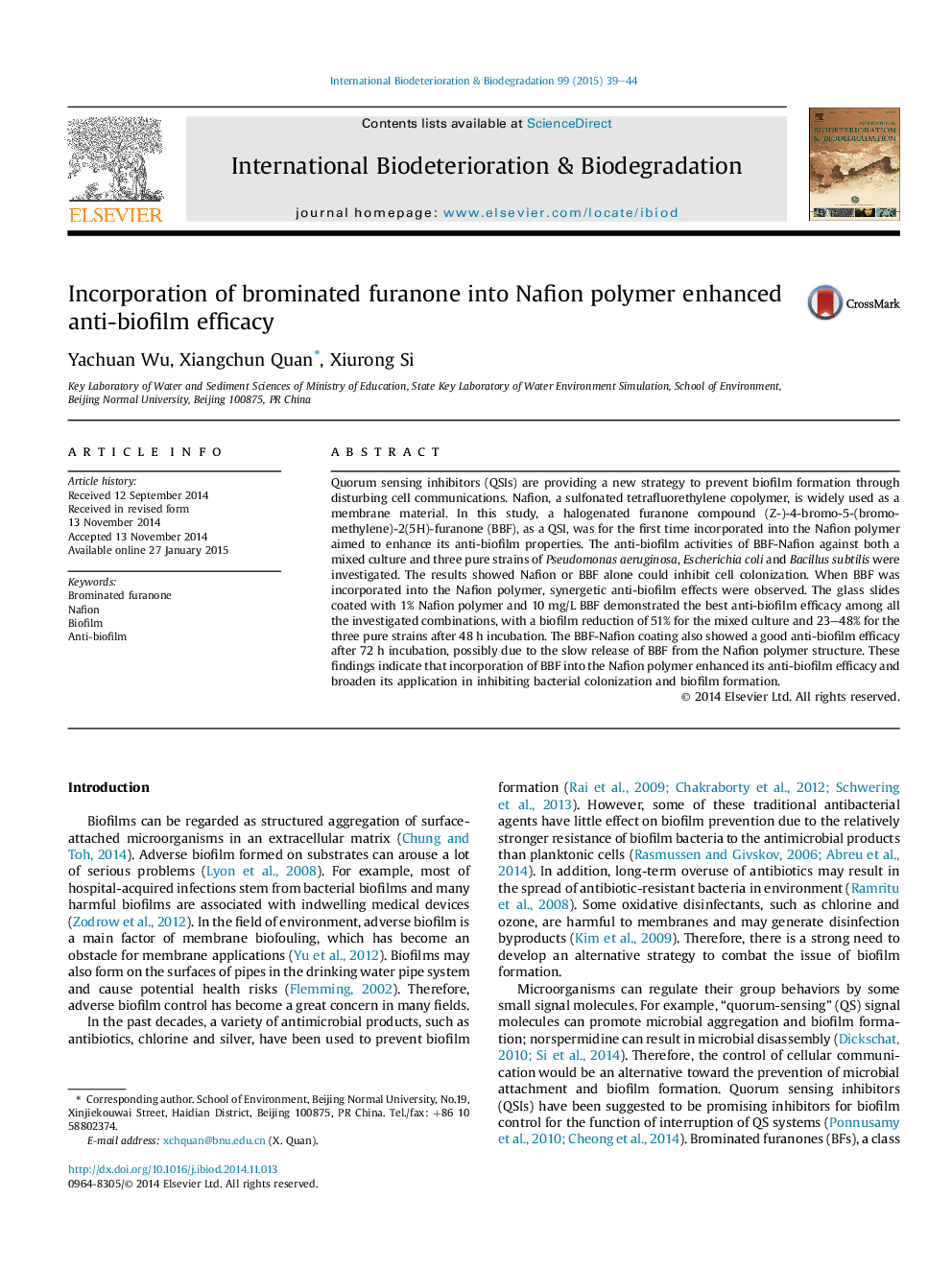| Article ID | Journal | Published Year | Pages | File Type |
|---|---|---|---|---|
| 4364641 | International Biodeterioration & Biodegradation | 2015 | 6 Pages |
•BBF or Nafion alone showed certain ability to prevent biofilm formation.•Incorporating BBF into Nafion polymer enhanced anti-biofilm efficiency.•Coatings with 1% Nafion and 10 mg L−1 BBF showed the best anti-biofilm efficacy.•The BBF-Nafion coating possessed a potential of sustained biofilm inhibition.
Quorum sensing inhibitors (QSIs) are providing a new strategy to prevent biofilm formation through disturbing cell communications. Nafion, a sulfonated tetrafluorethylene copolymer, is widely used as a membrane material. In this study, a halogenated furanone compound (Z-)-4-bromo-5-(bromomethylene)-2(5H)-furanone (BBF), as a QSI, was for the first time incorporated into the Nafion polymer aimed to enhance its anti-biofilm properties. The anti-biofilm activities of BBF-Nafion against both a mixed culture and three pure strains of Pseudomonas aeruginosa, Escherichia coli and Bacillus subtilis were investigated. The results showed Nafion or BBF alone could inhibit cell colonization. When BBF was incorporated into the Nafion polymer, synergetic anti-biofilm effects were observed. The glass slides coated with 1% Nafion polymer and 10 mg/L BBF demonstrated the best anti-biofilm efficacy among all the investigated combinations, with a biofilm reduction of 51% for the mixed culture and 23–48% for the three pure strains after 48 h incubation. The BBF-Nafion coating also showed a good anti-biofilm efficacy after 72 h incubation, possibly due to the slow release of BBF from the Nafion polymer structure. These findings indicate that incorporation of BBF into the Nafion polymer enhanced its anti-biofilm efficacy and broaden its application in inhibiting bacterial colonization and biofilm formation.
Graphical abstractFigure optionsDownload full-size imageDownload as PowerPoint slide
